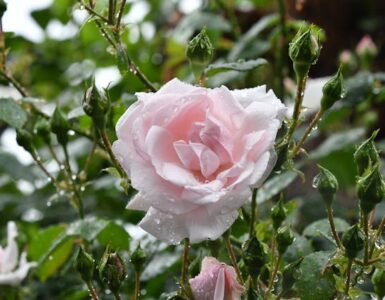If you look at the oldest tree on Wikipedia, you will not find it mentioned.
If you believe in radiocarbon dating it is just 800 years old.
If you believe the local legends, then this tree is more than 6600 years old.
This tree is popularly known as Parijat or Parijaat Tree, while its scientific name is Adansonia digitata.
We got an opportunity to visit the sacred tree and the majesty of the mighty tree is a sight to behold. Irrespective of the actual age of the tree, viewing the tree up, close, and personal was mesmerizing.
Parijat Tree is located at a distance of about 70km from Lucknow, at Kintur village near Barabanki in the northern Indian state, Uttar Pradesh. It takes a little over an hour from the state capital Lucknow to reach the place.
Coming back to the legends associated with the tree, Hindus worship the tree for its historical significance and also consider this to be a wish-fulfilling tree. Due to various legends and beliefs, the tree is considered to be very sacred and hence you will also find many temples in the vicinity.
Catch the glimpse of the tree in the below video.
Let us go through a couple of stories associated with the Parijat Tree.
Arjun brought the Parijat Tree for his mother

Let me mention the first one, which is mentioned on the noticeboard outside the tree compound.
The headline of the noticeboard written by the local administration is “Swarg se Utra ek Vriksh” meaning, a tree that has come down from Heaven.
As per the Hindu scriptures, Samudra Manthan, or the churning of the ocean is one of the most significant moments in history.
Many kinds of gifts, treasures, animals, and valuables emerged from that ocean churn, and the Parijat tree is one of them. Lord Indra took the tree with him to the heavens.

Then, during the Mahabharata era, Arjuna the main hero of the Pandava clan brought this tree to the earth for his mother Kunti. She used the flowers of the tree as an offering to Lord Shiva and seek the victory of Pandavas in the great war (Mahabharata).
The name of the Kintur village and the area nameBarabanki also seem to be derived from Kunti.
Lord Krishna brought the Parijat Tree for his wife
Another prominent legend in the Hindu text mentions the tree to be brought by Lord Krishna for his wife.
When Lord Narad went to visit Lord Krishna, he presented flowers from the Parijat tree. Lord Krishna further gave the flowers to his wife Rukmani. When Lord Krishna’s other wife Satyabhama came to know about it, she confronted Lord Krishna for showing bias and insisted that Krishna get her the complete tree from the heavens which was ruled by Lord Indra.
After an altercation with Lord Indra, Lord Krishna was able to bring the tree to the earth and planted it at Satyabhama courtyard. Interestingly the placement of the trees was such, that the flowers would also fall in Rukmani’s courtyard.
Facts of the Parijat Tree

The tree comes with peculiar features like it bears only flowers and no fruits, therefore it is difficult to grow this tree anywhere else. The tree sheds leaves in winters and during May-June new leaves sprout, so for six months it is green and for the rest of the year it remains barren.
The flowering is not always certain, but when it does, it is an incredible sight. The flower is white in color and comes only in the evening (around 6 pm) and once it falls it turns golden in color after a certain period.
The perimeter of this tree’s trunk is around 50 feet and has a height of around 45 feet.
In 1997, which was India’s 50th year of Independence, the postal department of India released two commemorative postal stamps on Parijat tree. One stamp shows the tree and is valued at Rs 5, while another valued at Rs 6 depicts the flower.

Restoration of the Parijat Tree
In 2015, the locals complained about the decay due to bacterial and fungal infections of the Parijat Tree. The Scientists from the National Botanical Research Institute (NBRI) treated the tree and administered chemical treatment. NBRI team also recommended the application of microbial bio-pesticide on its trunk and leaves to preserve it for any further diseases.
The local administration has strictly prohibited any kind of damage to the tree.
Radiocarbon Dating of the Tree
In 2020, scientists did radiocarbon dating of the Parijat tree and their findings indicate that it is around 800 years old and is the oldest dated African baobabs (Adansonia digitata) outside Africa.
There are no historical records that suggest bringing African baobabs to India, hence how it came to India is an unsolved and interesting mystery.






Nice article